🔥 FREE Shipping on All Polish Shirt Store Vendor Products! 🔥
🎁 Heads up! Carriers are already experiencing delays, and packages are taking longer to arrive.
📦 Christmas Delivery Cutoff: December 10th! 🎁
🔥 FREE Shipping on All Polish Shirt Store Vendor Products! 🔥
🎁 Heads up! Carriers are already experiencing delays, and packages are taking longer to arrive.
📦 Christmas Delivery Cutoff: December 10th! 🎁
By State
Ultimate Guide to Polish Wedding Traditions

A Guide To Polish Weddings
Polish wedding customs are rooted in Slavic culture, which is why lots of Slavic countries share identical or slightly altered traditions. Yet, generally speaking, Polish and Polish American weddings are not that different from other modern weddings in the Western world. A bride and a groom (with the best man and maid of honor) make a date to stand in front of a civil officer, listen to a few words of wisdom, sign a piece of paper, and then continue celebrating their new life together.
Some couples like big weddings and parties till the early morning hours - other couples prefer to go out for a nice celebratory meal with their loved ones. And while some couples like to keep things simple - others prefer to include joyful Polish wedding traditions in their parties.
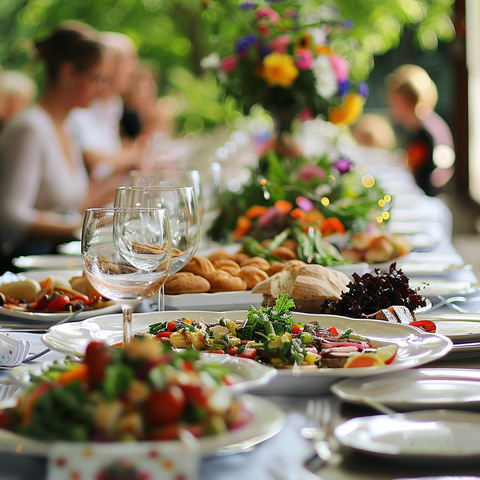
A guide to Polish culture and Polish wedding traditions is essential for anyone attending a Polish wedding. For non-Polish people as wedding guests, knowing how to survive a Polish wedding and fully participate in the festivities is essential. From the first dance to the Polish tradition of Poprawiny, a traditional Polish wedding is a fantastic celebration!
Polish Wedding Timeline
Today, there is no such thing as an arranged marriage in Poland. Yet not that long ago, the whole world functioned via arranged marriages, and Poles were not an exception - a marriage was considered to be more of a business transaction than an act of love between the couples. Things like dowry and matchmaking were important elements of a wedding timeline, but we will tell you how a Polish marriage functions now when it comes to the steps that are taken.
So, a typical Polish wedding timeline looks something like this:
- First comes dating. A boy meets a girl, or a girl meets a boy, and then they date for a while or until they are sick of all the aunties asking them when they will tie the knot.
- Then comes engagement. A Polish engagement ring (its style and look depending on the groom's budget) is worn on the right hand, only to be moved to the left alongside the wedding ring after the marriage ceremony. It is (still) a good idea for the groom to ask the father of their bride for their daughter's hand in marriage, and couples like to throw an engagement party for their closest ones, which is an excellent opportunity for both families to meet each other.
- Then, wedding preparations begin, along with all the organizational chaos - choosing the dress, the venue, the Polish wedding cake, and the band.
- A hen's and bachelor's parties take place ideally the last weekend before the wedding ceremony (so everyone has time to recover because, well… Polish vodka is strong).
- Then comes the wedding day!
- And then comes, though it's not obligatory - the second wedding day, known as poprawiny (will be discussed later).
Yes, a Polish wedding is just as exciting and chaotic as any other!
Polish Wedding Dress
The Polish wedding dress is usually white or ivory, symbolizing purity and innocence. It is often adorned with intricate lace, floral embroideries, and delicate beading. The dress is typically a ball gown style, with a full skirt and a fitted bodice, creating a romantic and elegant silhouette.
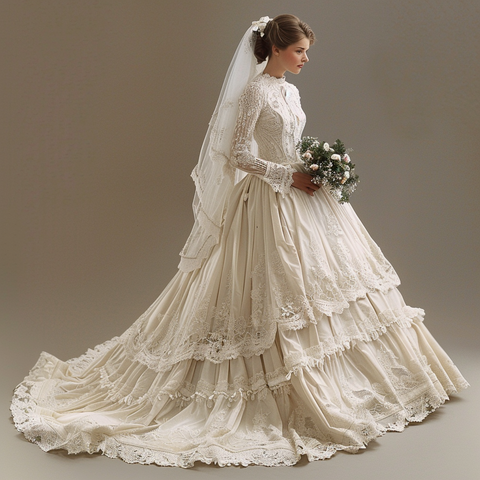
In addition to the beautiful dress, Polish brides often wear a traditional headpiece called a wianek, which is a wreath of flowers and greenery worn on the head to symbolize fertility and prosperity. The bride may also wear a veil, often handcrafted and passed down through generations as a family heirloom. Overall, the Polish wedding dress is a reflection of the bride's cultural heritage and a celebration of love and tradition. It is a beautiful and meaningful part of the Polish wedding ceremony.
Polish Wedding Ceremony
Polish weddings usually consist of a formal ceremony where couples can choose to get married in a church or a civil institution. The wedding dress and hat are significant parts of the attire for the bride and groom, often reflecting Polish folklore. Polish couples also tend to incorporate Polish music and dance floor traditions into their celebrations. The wedding invitation typically includes details about the wedding food, with the first dish that is served being a prominent aspect of the reception. People in Poland cherish the Polish wedding traditions and often opt for a ceremony that reflects their cultural roots. For many, a Polish wedding signifies more than just a celebration of love; it is a means wedding party to showcase their pride in their ancestry and join in a joyous occasion with their loved ones.
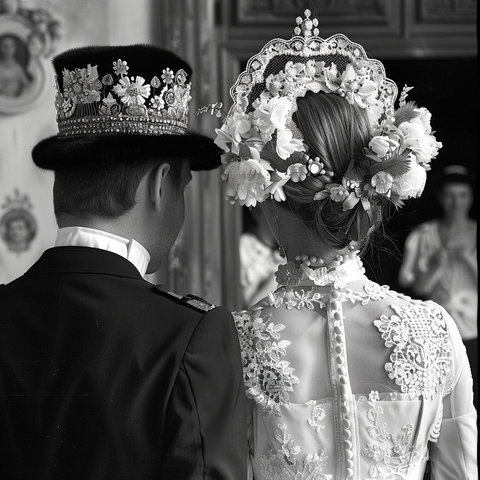
Zmówiny
Zmówiny, a traditional Polish wedding custom, is the term used to describe the gathering where the bride and groom's parents come together for the first time. Stemming from the era of arranged marriages in Poland, this was a time for parents to discuss the intricacies of their children's future union. Today, this semi-formal event where parents are introduced to each other for the first time is commonly known as zmówiny.
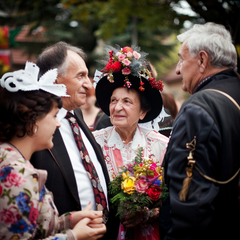
Polish Bread and Salt Blessing
The practice of blessing bread and salt is a widespread tradition in Slavic communities that remains prevalent in modern times. Following the marriage ceremony, as the newlyweds return home or to their wedding reception, they are traditionally met by their parents, bearing a tray of bread sprinkled with salt and sometimes accompanied by wine. It is customary for the couple to partake of the bread and salt as a symbol of receiving blessings for a prosperous union. This ritual signifies the start of the wedding celebration.
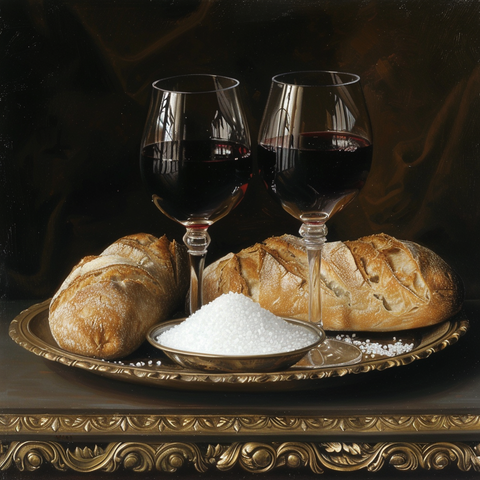
Polish Wedding Toast
In the context of Polish wedding ceremonies and other formal Polish events, it is customary to observe a moment for a traditional toast. Typically delivered by selected family members or a collective of close friends, this is an opportunity to extend well-wishes to the newlyweds, celebrate their union, and offer blessings for their future together.

Polish Wedding Food
One of the highlights of a wedding in Poland is the abundance of Polish food served at the celebration. From traditional Polish chicken soup to the famous Polish chicken and delicious Polish wedding cake, guests are treated to a feast fit for royalty.
Some popular dishes that are typically served at a Polish wedding include pierogi (dumplings filled with various ingredients such as cheese, potatoes, or meat), golabki (cabbage rolls filled with a mix of meat and rice), and kielbasa (sausage). A variety of side dishes such as potatoes, salads, and pickled vegetables often accompanies these dishes.

The wedding cake, known as tort weselny, is a grand and elaborate multi-tiered creation that is a centerpiece of the wedding reception. It is often decorated with fresh flowers, intricate designs, and sometimes even figurines of the bride and groom.
Polish Traditional Wedding Dance, Oczepiny
The Polish wedding dance, also known as the "Oczepiny" or the "unveiling ceremony," is a traditional dance performed at Polish weddings. This happens at the stroke of midnight when the bridal party comes together to remove the veil from her hair. Some brides change their hairstyle at this moment, removing the braids from the hair as well, symbolizing the bride's transition from being a single woman to a married woman. And then the bride throws her veil into the bridal party, as whoever catches it first is (said) to be the next to marry! The bridal party and wedding guests then form a circle around the couple as they dance in the center.
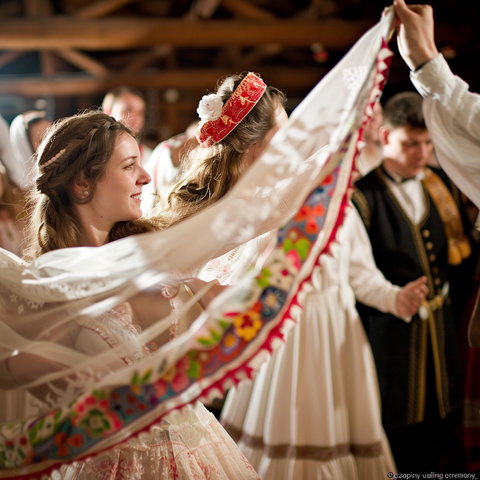
The bride and groom may perform traditional dances such as the Polonaise or the Mazurka, accompanied by Polish songs or music from a live band or DJ. As the dance progresses, guests may join in and dance alongside the couple, celebrating their new union. The dance is often a joyous and festive occasion, filled with laughter, music, and traditional Polish customs. Overall, the Polish wedding dance is a cherished tradition that brings family and friends together to celebrate the love and union of the newlyweds. It is a time-honored custom that holds deep cultural significance in Polish weddings.
Polish Apron Dance
The Polish apron dance can provide a meaningful moment for the bride during her wedding ceremony. While some may view it as a bit unconventional, overall, it is a cherished tradition that symbolizes the bride's transition from girlhood to womanhood. Guests are invited to participate by standing in line to dance with the bride, who holds a special apron for them to place money in. Those who have danced with the bride then encircle her, playfully preventing the groom from entering and claiming his bride.

Polish Dollar Dance
The Polish dollar dance is a Polish American tradition that takes place during a wedding reception. To the tune of a lively music, guests form a line and give the Maid of Honor a dollar for a turn to dance with the bride. The collected money is usually given to the newlyweds for use on their honeymoon.
Poprawiny, a Second Wedding Party
Poprawiny, or the second day of the wedding celebration, are typically held the day after a Polish wedding. This tradition dates back to when weddings in Poland were multi-day events, with the first day being the ceremony and reception and the second day being a less formal, casual, and relaxed celebration with close Polish family and friends. It's held to continue the festivities and allow the newlyweds to spend more time with their loved ones. It also gives guests who may have been unable to attend the wedding day the opportunity to celebrate with the couple. There is often a lot of singing and traditional Polish music playing, creating a lively and festive atmosphere, including more eating, drinking, and dancing.
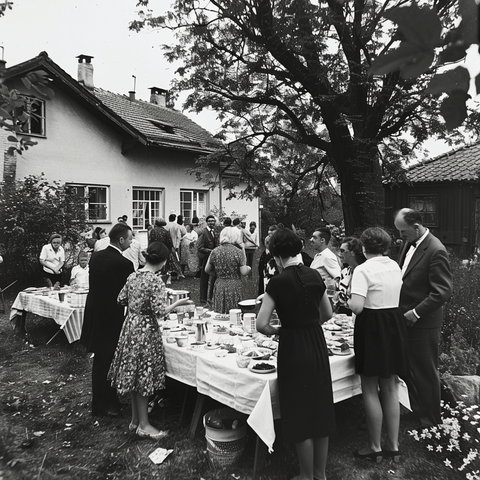
Invited to A Polish Wedding?
If you are invited to a Polish wedding, prepare to have a great time! Regarding the rules of manners, modern Polish weddings are not that different from American weddings. Follow the clues on the invitation about whether or not you should bring a plus one or if the wedding is suitable for kids; dress nicely (no jeans, sneakers, etc.), say gratulacje (congratulations), and sing the Sto Lat song!
1 Response
Leave a comment
Comments will be approved before showing up.
Recent Articles
-
Say Happy Birthday in Polish: Sto Lat & 5 More Birthday Wishes
September 24, 2025
-
Faworki Recipe (Chrusciki or Polish Angel Wings)
February 19, 2025
-
Solidarnosc Candied Plums in Dark Chocolate Review
November 14, 2024
-
Uncover the Thrilling Wonders of Zakopane
February 08, 2024
-
Looney Pruney Organic Pitted Dried Prunes Review
February 01, 2024
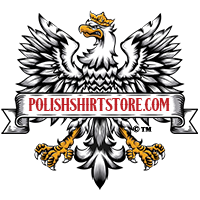
Shreecaterers
March 10, 2025
Polish weddings are a wonderful mix of tradition, joy, and vibrant celebrations. The customs, from the blessing ceremony to the lively dancing, make the experience truly special. Love how these traditions bring families together and create unforgettable memories.